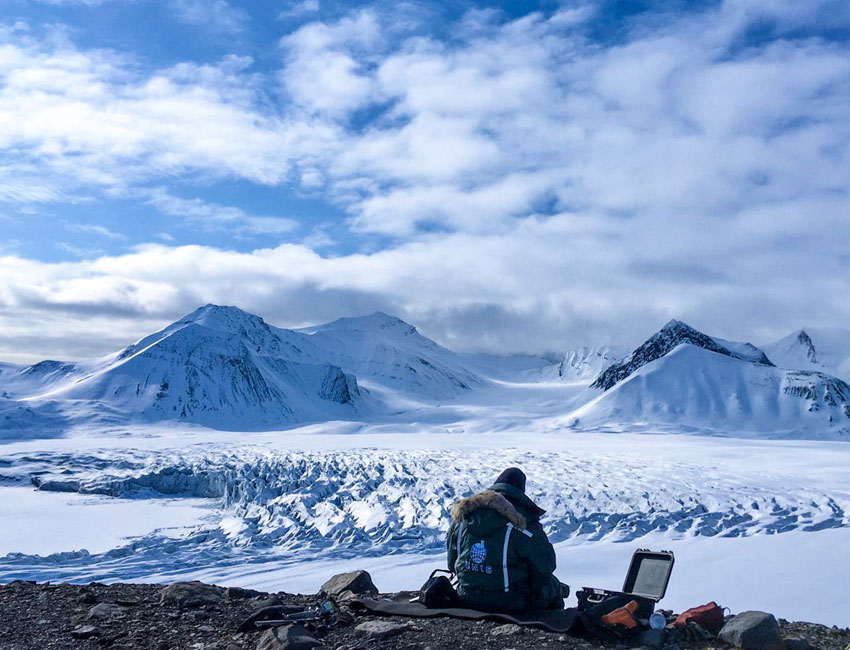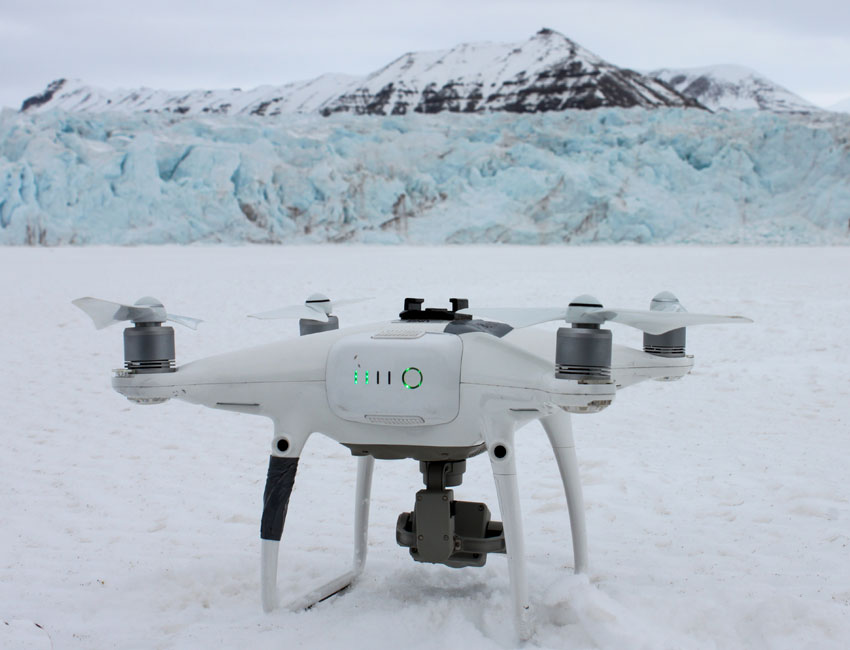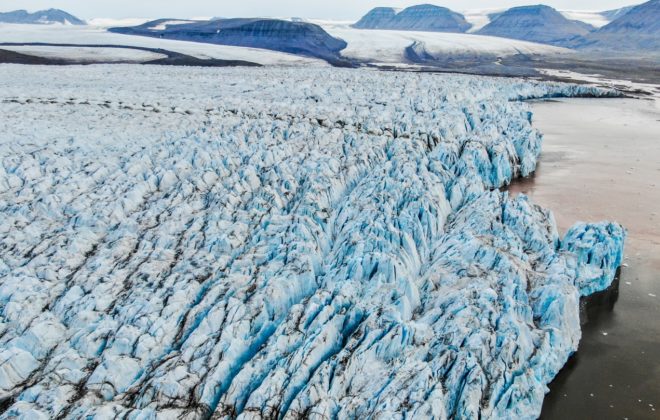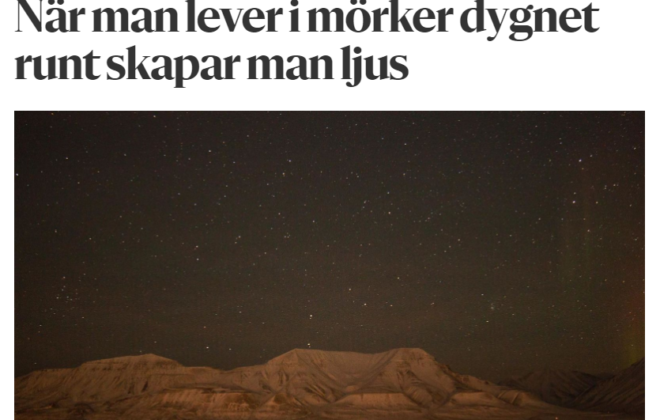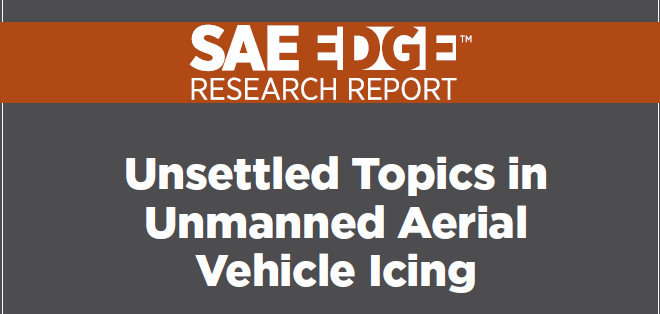Svalbard Fieldwork during COVID-19
I have a project at the University Centre in Svalbard (UNIS) using drones to study glacier crevasses. Together with my master student, we are working on creating high-resolution maps of crevassed glacier areas. The goal is to understand the role of crevasses on how glaciers exchange heat with the atmosphere – a topic that is very relevant in the context of global climate change.
Our main fieldwork was planned during the period of the COVID-19 shutdown, but we were lucky enough to conduct most of it when UNIS opened for fieldwork again. We had strict requirements on how the fieldwork was to be conducted, ensuring social distancing at all times. In practice this was not too difficult for us but still required mindfulness. Most of the field time we spent on driving on snowmobiles – everybody on their own. Once at our destinations, we flew a drone above the glacier to take pictures of the crevasses – again this was easily possible with minimal interaction between the fieldwork participants. We will use these pictures to build 3D models of the glaciers which we can then process further to determine how the crevasses affect the heat exchange with the atmosphere. We are currently planning for more fieldwork in the summer as well, where we want to access some of the glaciers by boat.
